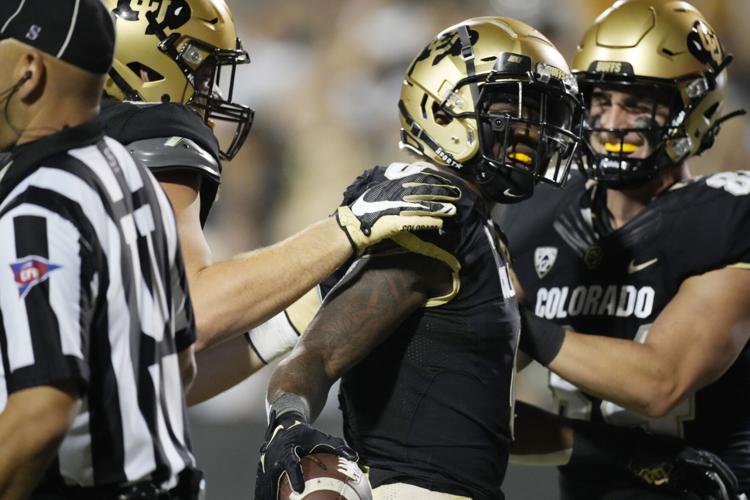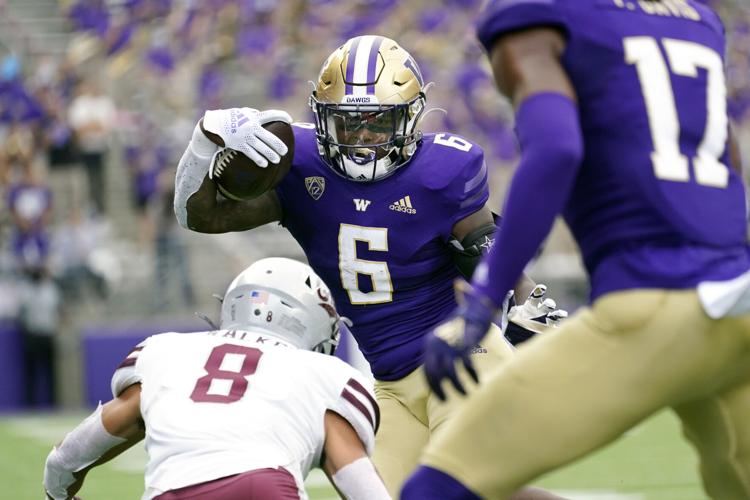In 105 years of Pac-12 football, there has never been a season like 2021.
Never have past struggles and future opportunity collided with such force.
Never have reputation and cash flow teetered to such an extent.
Never, ever, has success on the field connected so directly with success at the negotiating table.
And within this essential fall, one day — Saturday, Sept. 11 — stands as the most significant, with three reputation-shaping games against marquee programs from the SEC and Big Ten:
Washington’s stunning loss last week might have diminished the public appeal of its duel with Michigan, but the upset actually raised the stakes in the Big House. Was the loss to Montana a fluke, or a sign of steep decline from one of the Pac-12’s most important programs?
Colorado’s showdown with No. 5 Texas A&M provides the conference a second opportunity to topple the SEC — to prove UCLA’s rousing victory wasn’t an outlier and the Pac-12 can, in fact, hold its own against the king.
And then there’s Oregon, the two-time defending conference champion, with the most difficult assignment of all: Take down No. 3 Ohio State, open a path to the playoff and make clear to the college football world that the best of the Pac-12 can stand with the best in the sport.
Each game is meaningful in a slightly different manner, but the triple-whammy combination — Oregon at 9 a.m., Colorado at 12:30 p.m. and Washington at 5 p.m., all on broadcast television — serves to not only fill the day but complete the narrative.
And yet, the postseason stakes are but one aspect of the collision unfolding this fall for the Pac-12.
Step back, assess the recent struggles and future opportunities, and a multi-decade landscape comes into focus.
The conference hasn’t won a playoff game since the 2014 season (Oregon) or produced a playoff team since 2016 (Washington). Misguided strategic decisions, lagging media exposure and officiating gaffes further undermined public trust, on-field success and the value of the football brand.
Then came 2020, and an acceleration of Pac-12 irrelevance: The conference started later than its peers, never entered the playoff discussion, didn’t produce a top-10 team and was beaten soundly in its only two bowl appearances (Colorado in the Alamo and Oregon in the Fiesta).
At the same time, there is hope ahead: Late next year, the conference is expected to begin negotiating new media rights agreements that will shape its financial future.
The contracts signed with network partners will take effect in the summer of 2024 and determine the availability of resources for facility upgrades, recruiting budgets, coaching salaries and every other facet of the football machinery.
They carry the potential to close the revenue gap with the SEC and Big Ten and enhance the Pac-12’s strategic position relative to the ACC.
But the on-field reclamation project cannot wait until next season. Negotiating strategies and media valuations assuredly will be set months in advance of the official discussions.
This season is the Pac-12’s last best chance to burnish its reputation. To prove its supply of football inventory warrants demand from multiple bidders. To leverage its content for maximum windfall.
It’s not enough for ESPN and Fox to offer a modest increase in rights fees in exchange for another decade-long dance. The schools need CBS and NBC and maybe Turner or Amazon to view Pac-12 football as a must-have product.
They need demand to outstrip supply and the economic scales, which have tilted heavily against the conference for so many years, to swing in its favor.
For that to happen, the conference must prove itself worthy.
This season is essential to the process.
And within this season, Sept. 11 stands alone.





